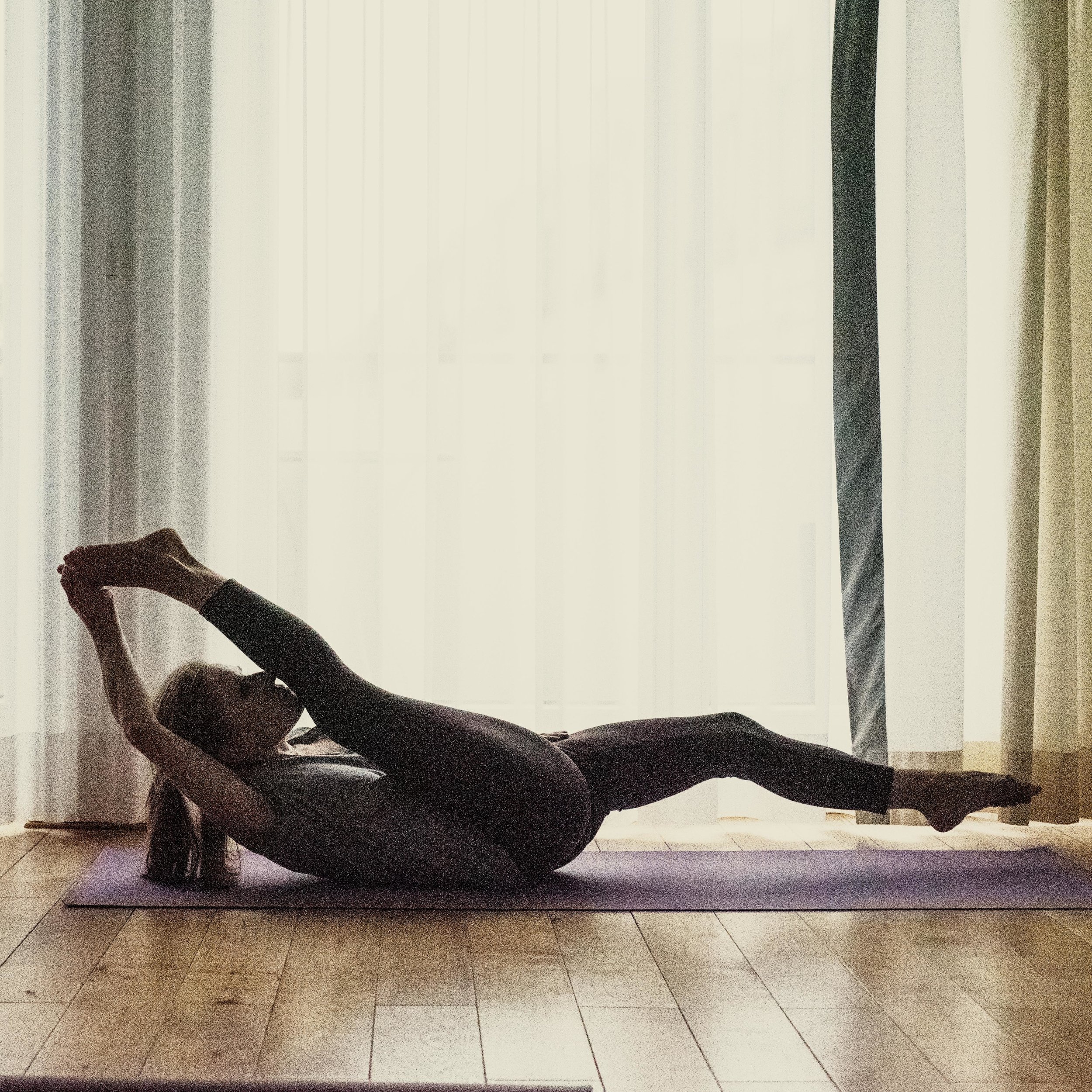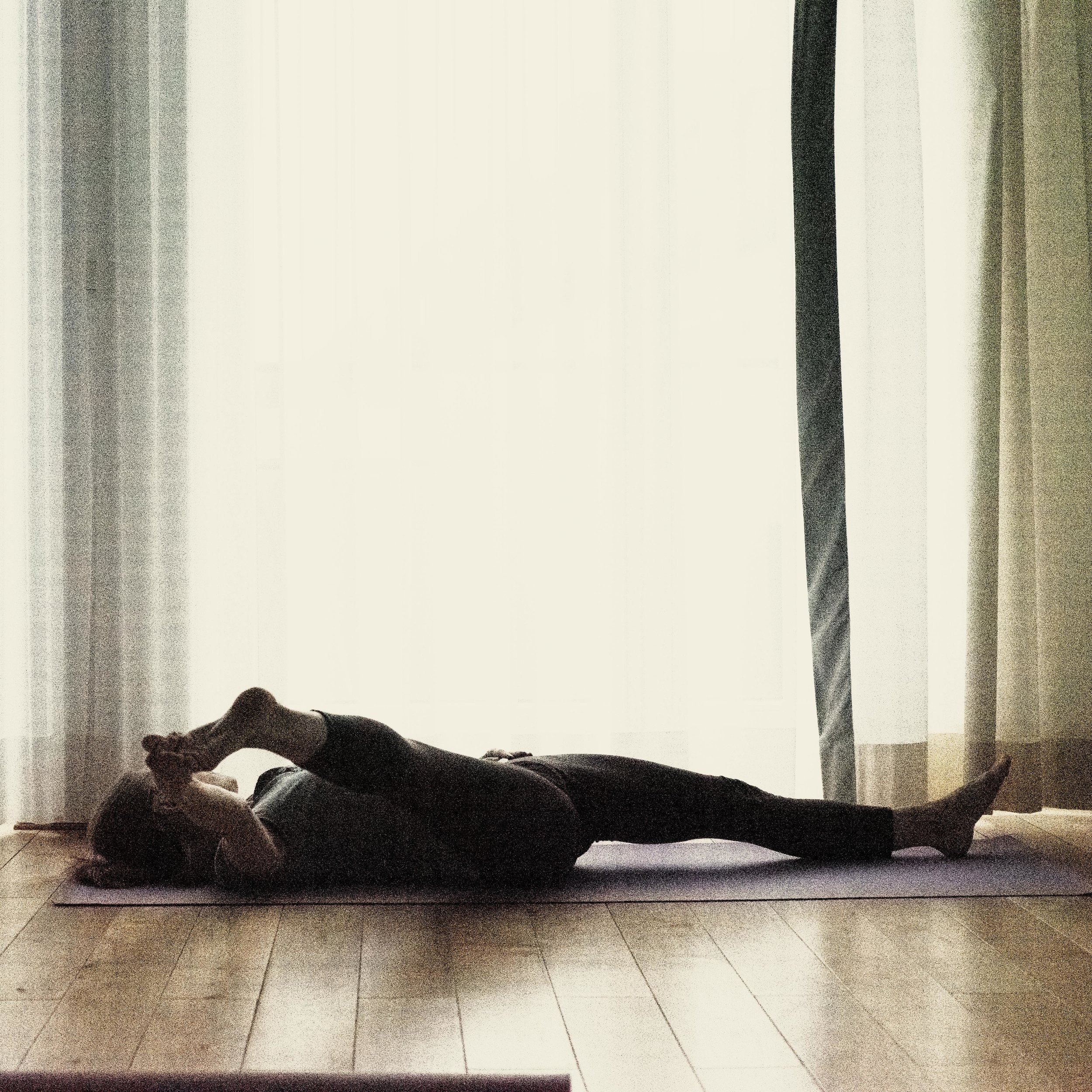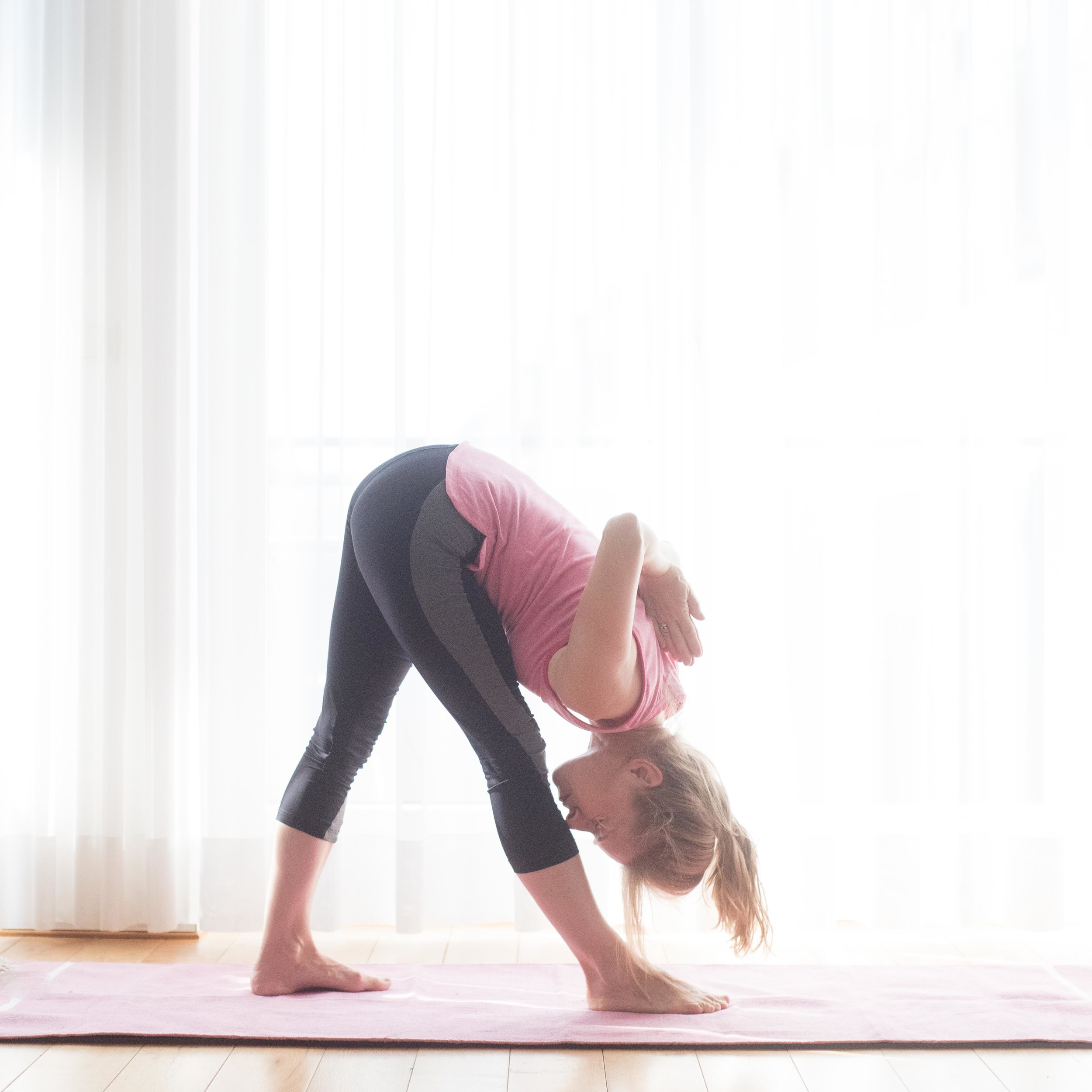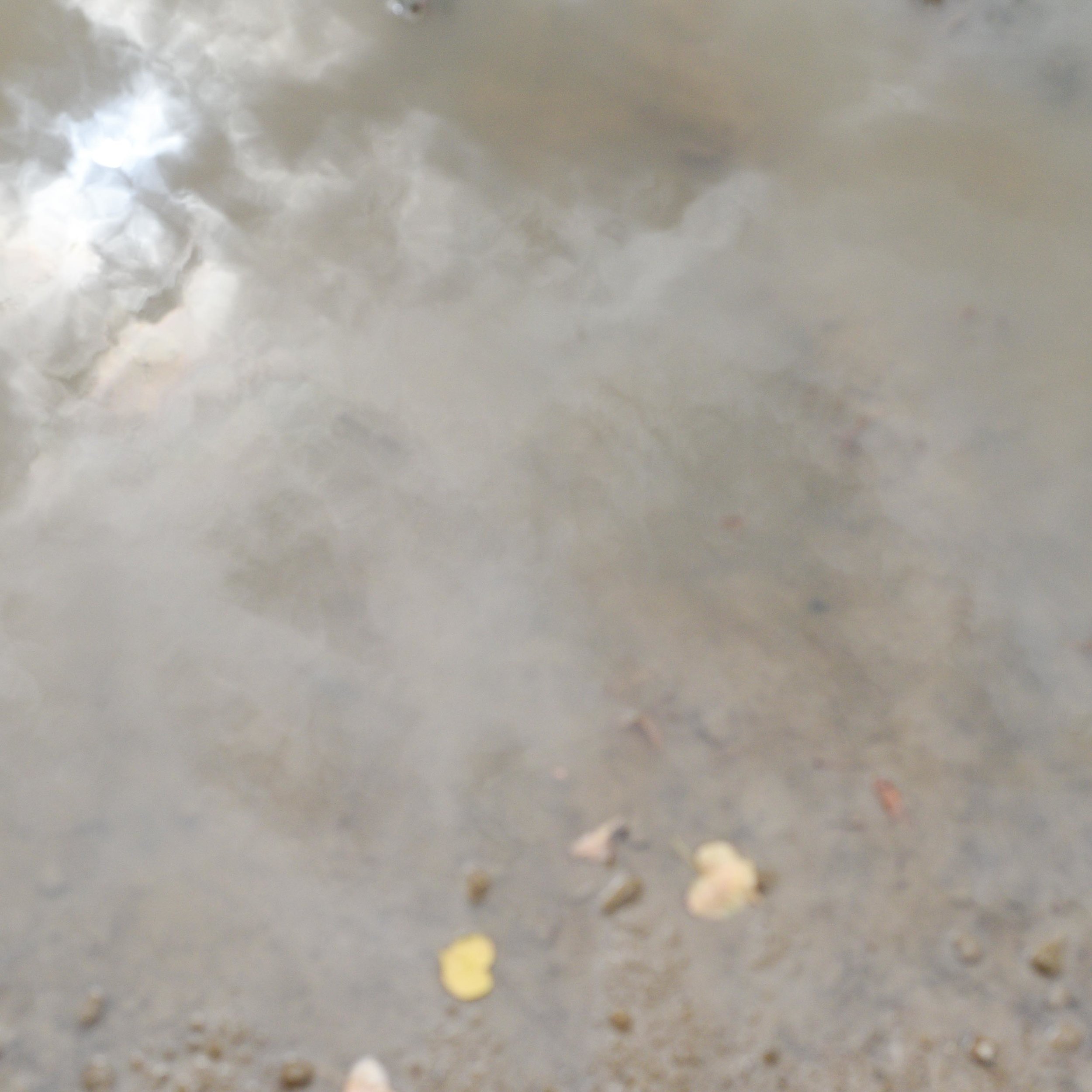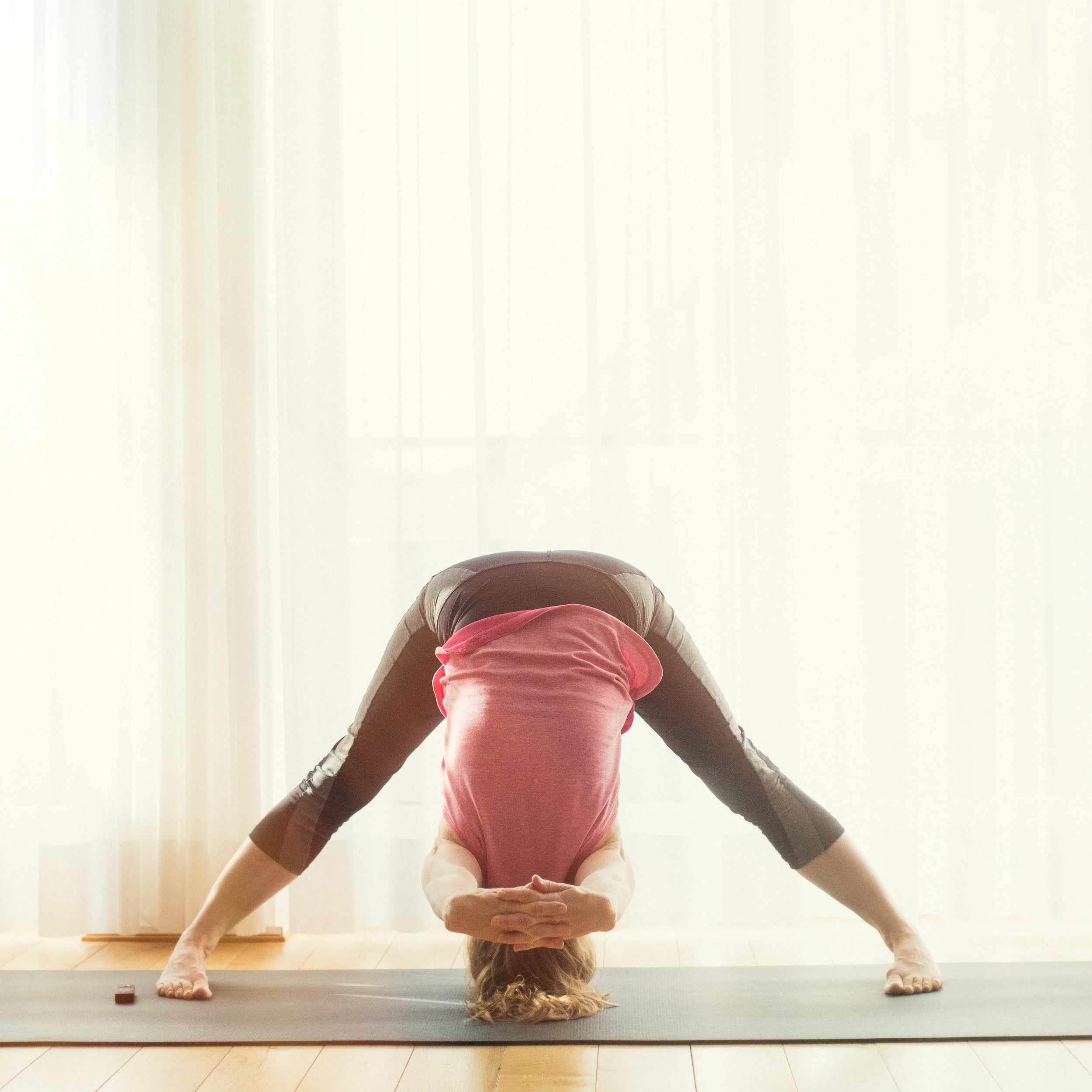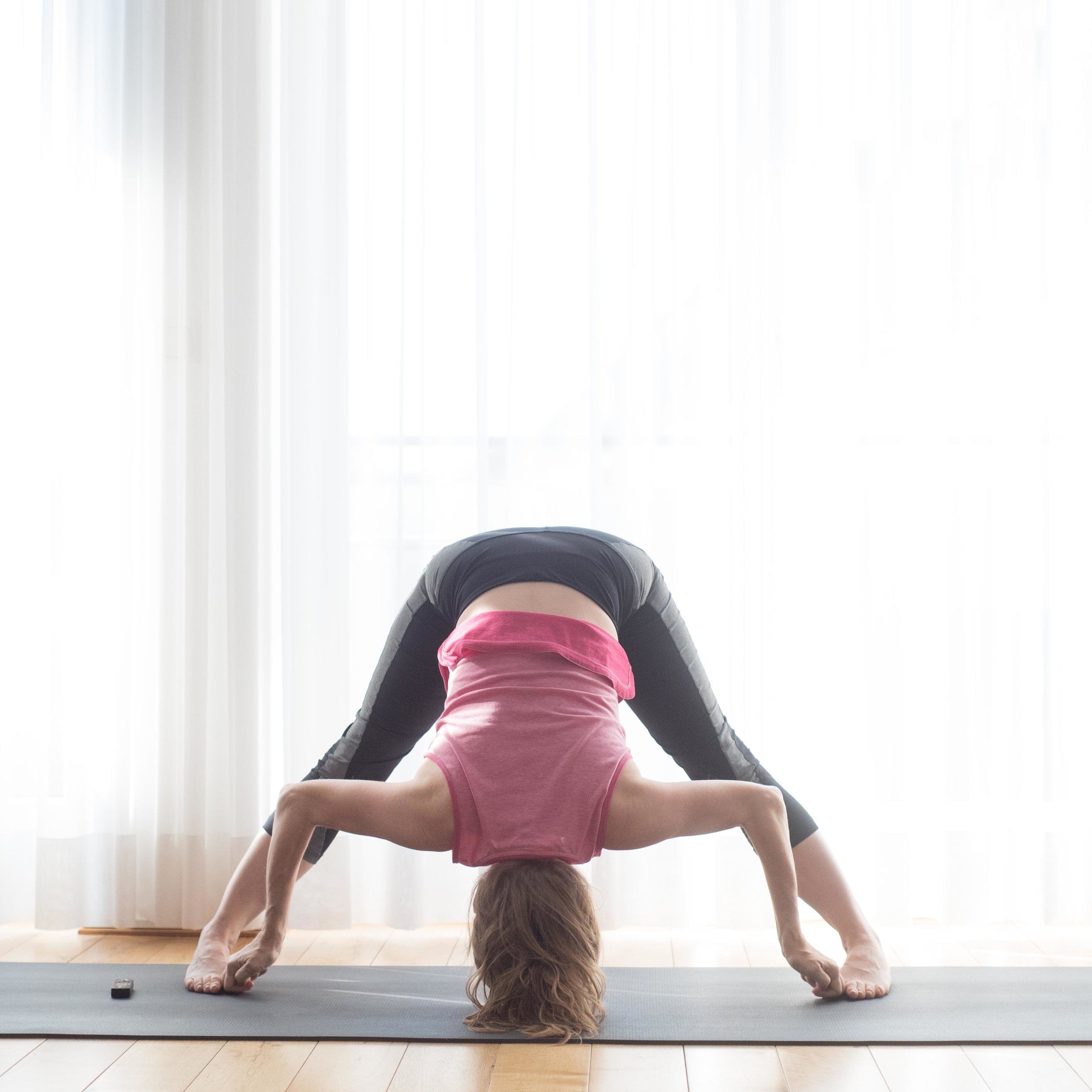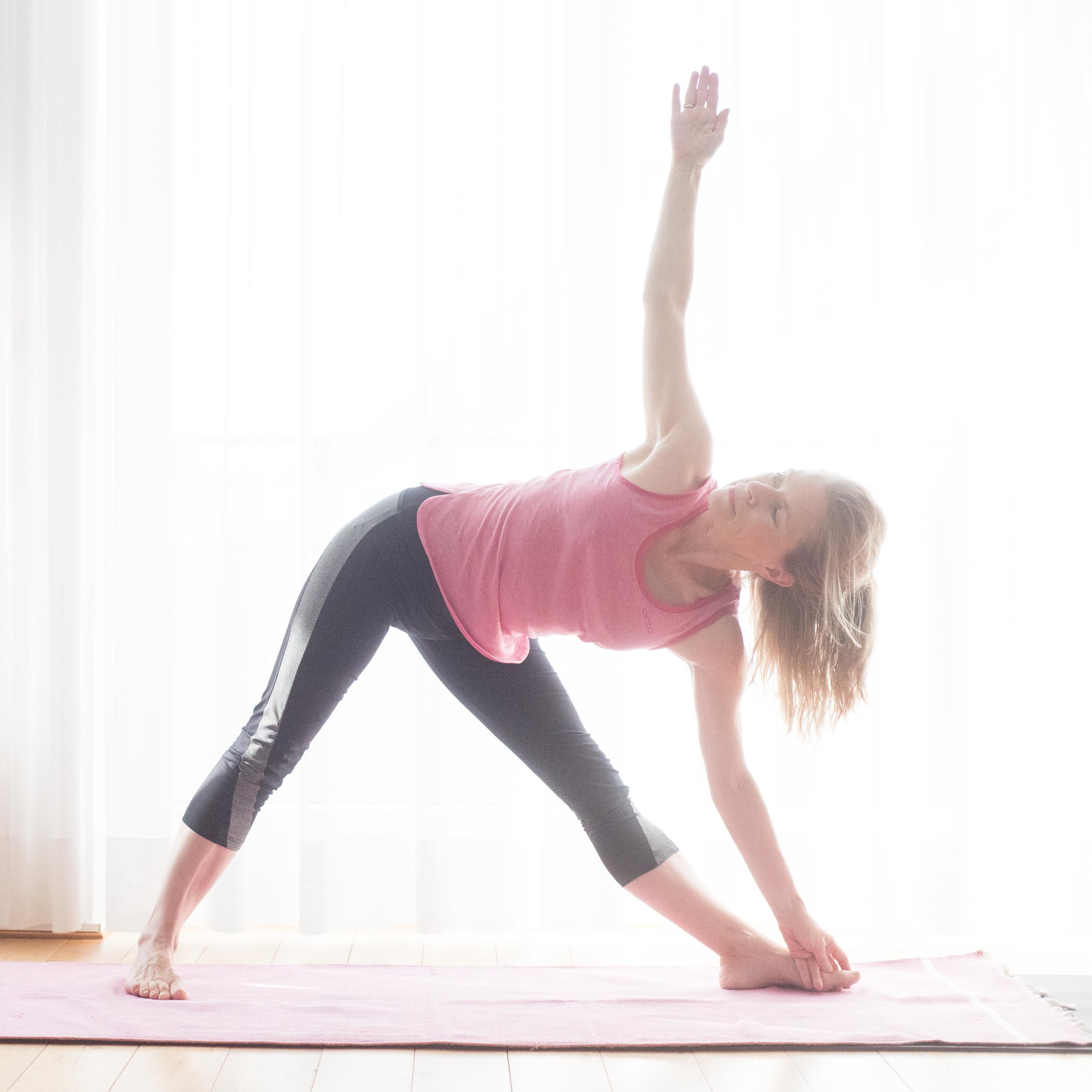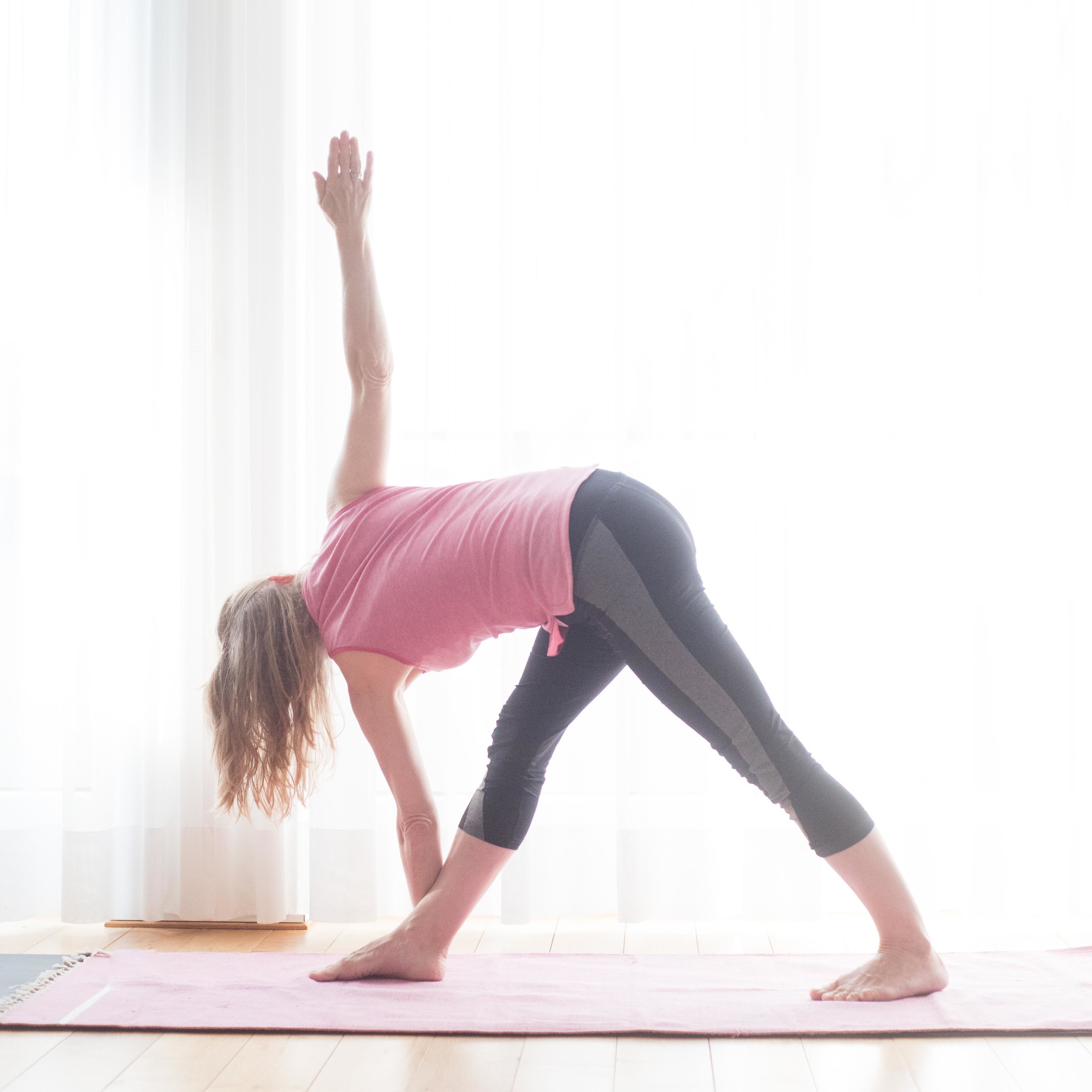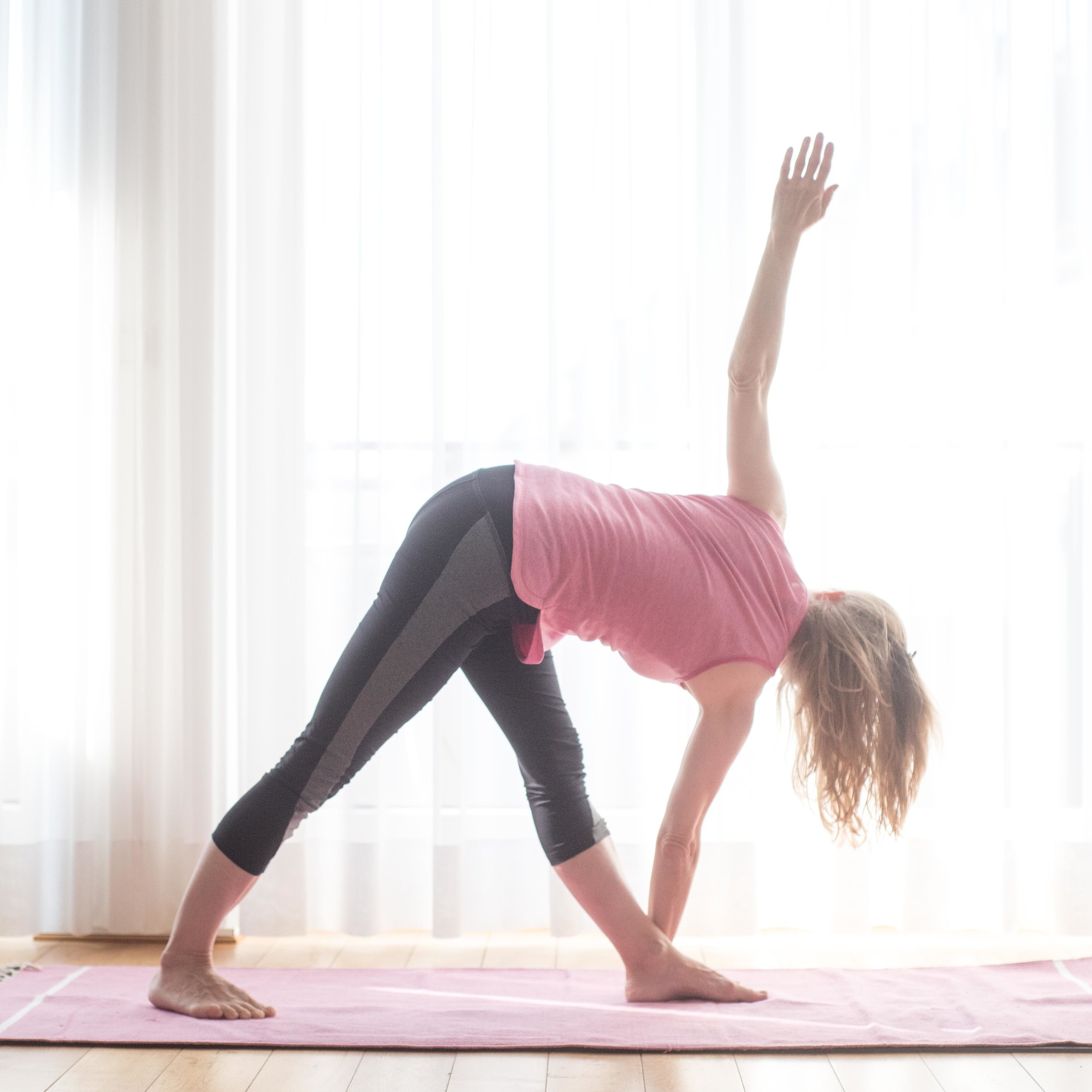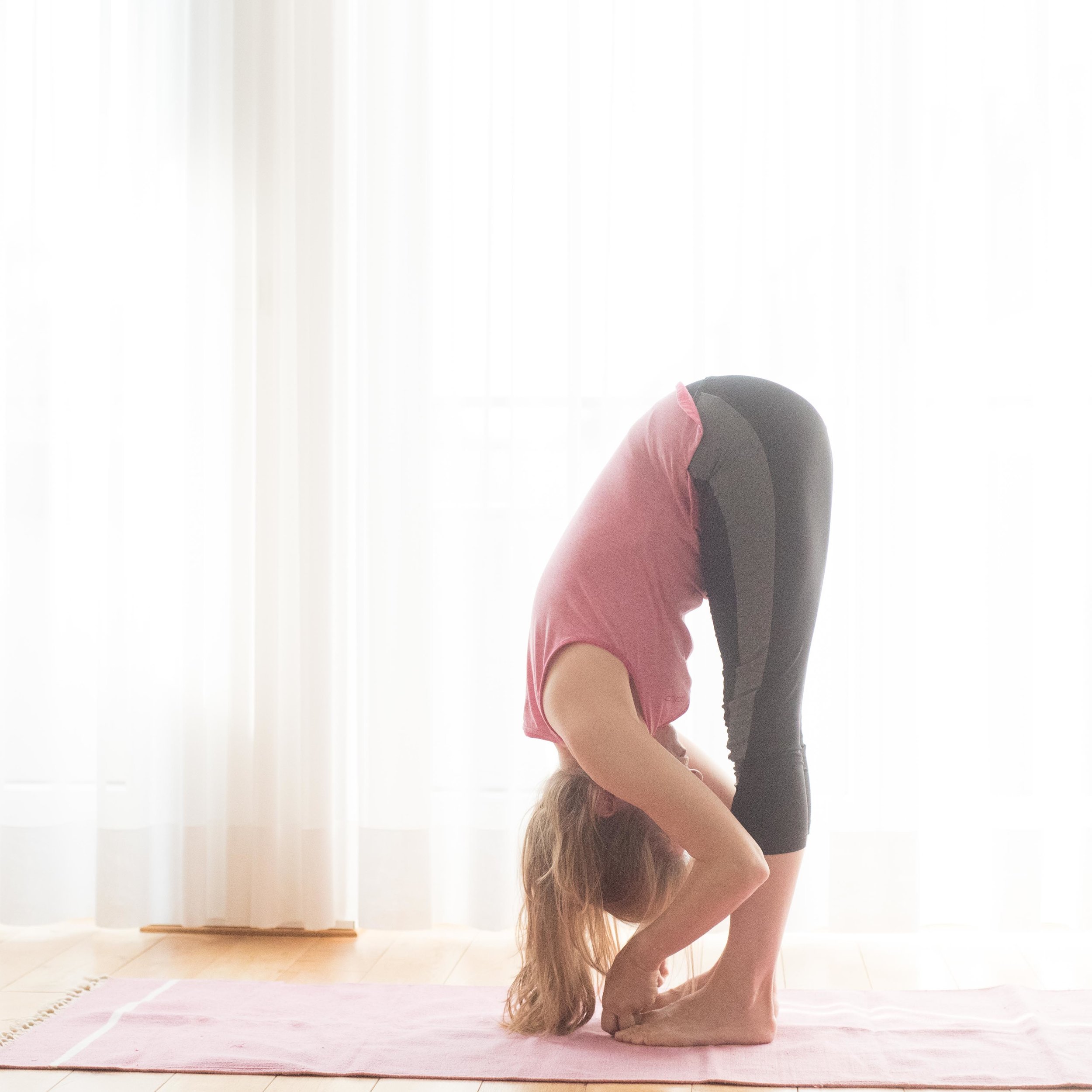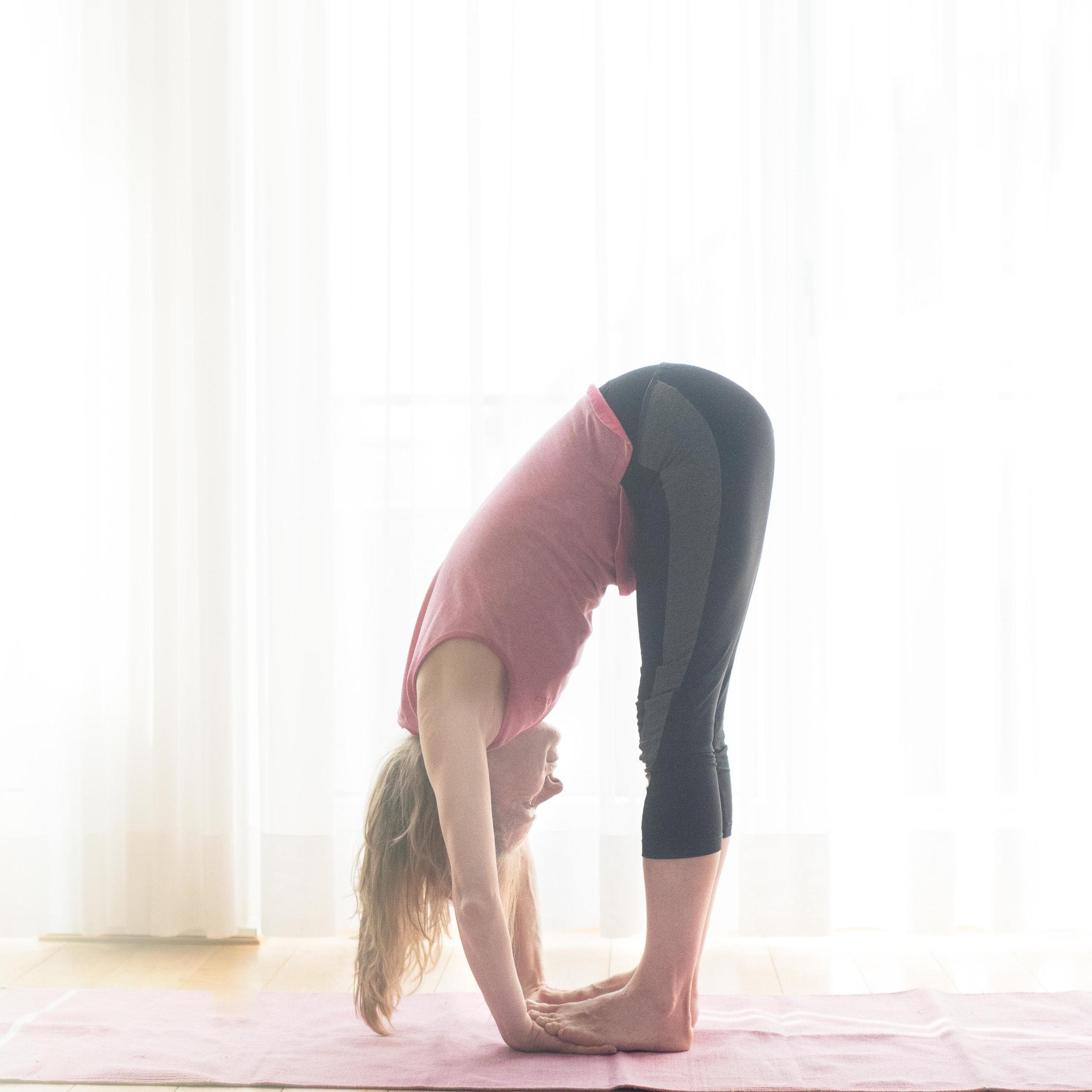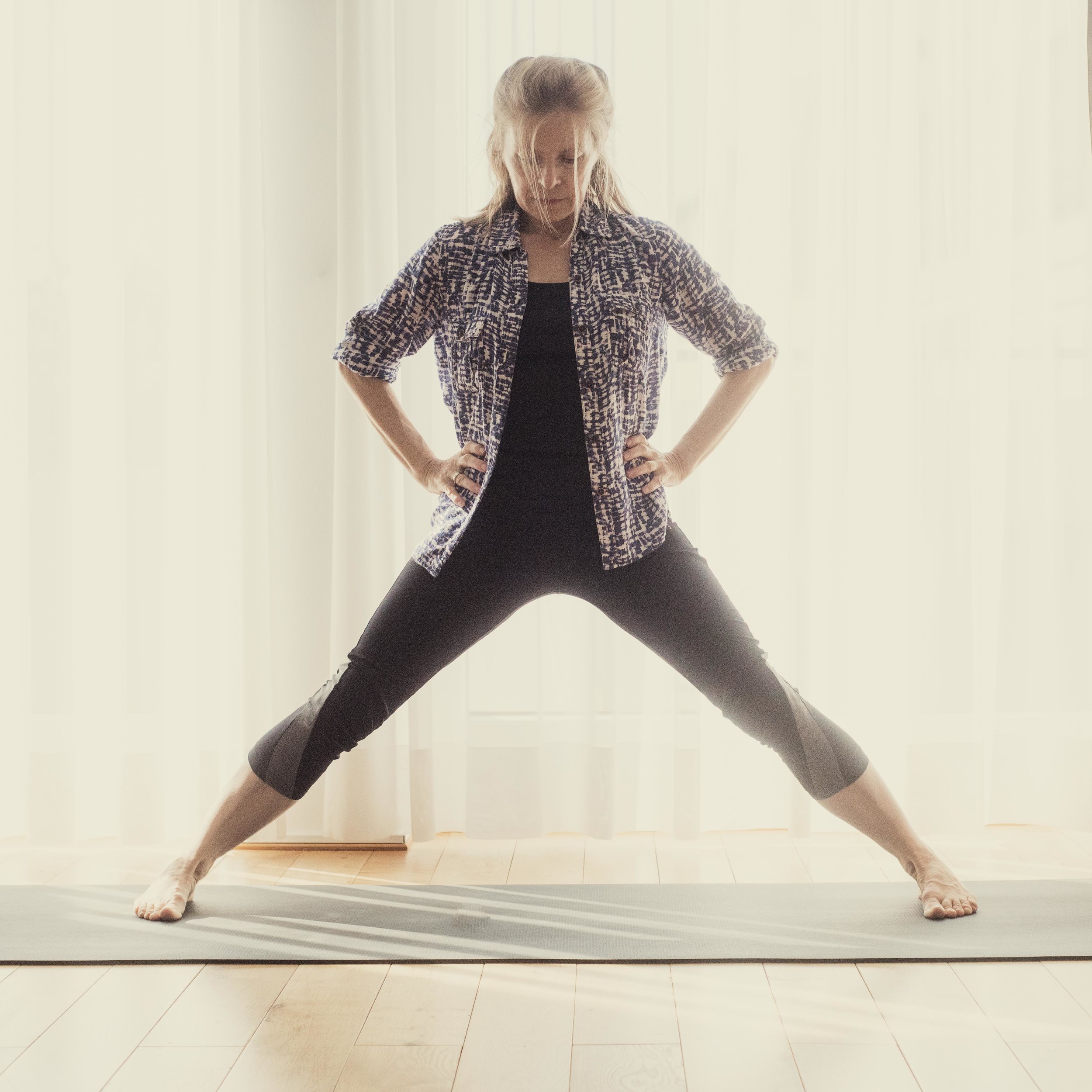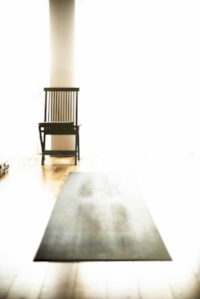The asanas in the first row are utthita hasta padangusthasana, utthita parsvasahita and utthita eka padasana.
The next two asana are supta hasta padangusthasana and supta parsvasahita and they are very similar to the first two asanas only that they are practiced while lying on the back. Yet this makes a difference. These asanas are practiced at the end of the middle part of the first Ashtanga yoga series.
The asanas of the second row are easier as there is no balancing aspect. They tell me my current level. When I cannot take my leg to the floor without lifting the other hip, I shouldn’t move the leg to the side when standing either. One should never sacrifice the position of the hips. It’s so easy to cheat, but one only cheats on oneself. My leg points rather forward than to the side. But that’s it.
The first asanas of both rows are forward splits. The second asanas of both rows are side splits with one leg. This is one reason why I work on the splits more intensively.
I think these poses should look more advanced after 12 years of daily practice. But just doing it and holding it for 5 breaths is not enough.
How to balance:
Many years I thought I must balance with the standing leg. Yet I even read that the knee should be locked. These days I lock the knee.
Utthita hasta padangusthasana: I bring the hip forward and pull the leg backwards with my hand. If the force is the same, the body remains stable.
In addition I breathe evenly and deeply.
My bandhas are engaged and I gaze sidewards (not down to the floor).
It’s possible to exercise how to balance. This is also a skill that can make life safer especially when growing older. Many people fall when they get older. They cannot balance anymore. Then they often break bones and injure themselves. Fear arises. The danger of falling can limit a life. It’s just another reason to practice balancing asanas. Practicing yoga is worth every minute.
Utthita hasta padangusthasana was another pose that I couldn’t perform due to my injured SI joint and the consequences that followed. I learned from a video with Stu Girling that he had the same issues. He recommended to learn to lift the leg higher first before bowing forward to the shin bone. For me it was not more possible to bow forward. I’m astonished and glad that I could do the pose today. Miracles happen.
I’m always astonished how demanding even the standing asanas are. But that’s Ashtanga yoga. It gives us a lot to bite on.
My next posts will be about stretching, because that’s what we do when we practice yoga.



